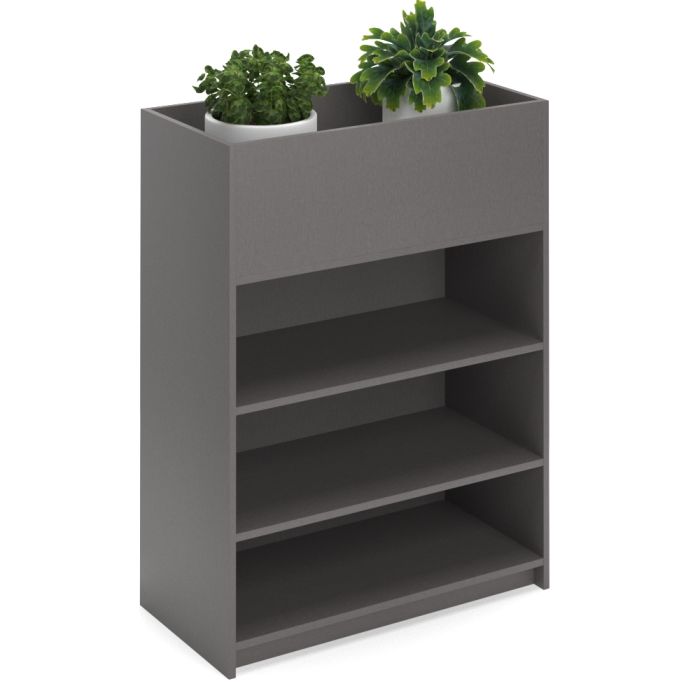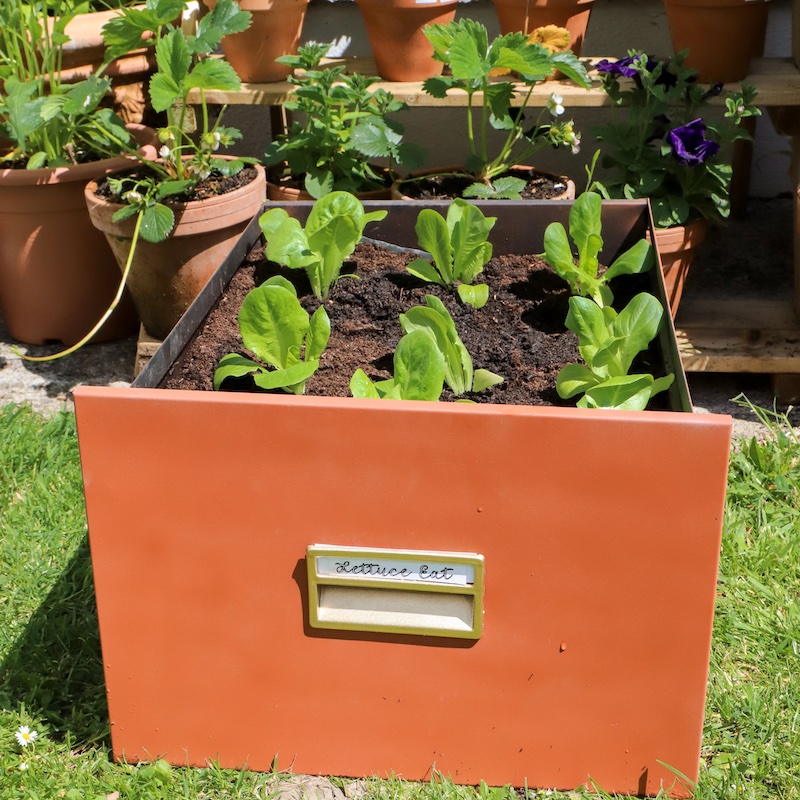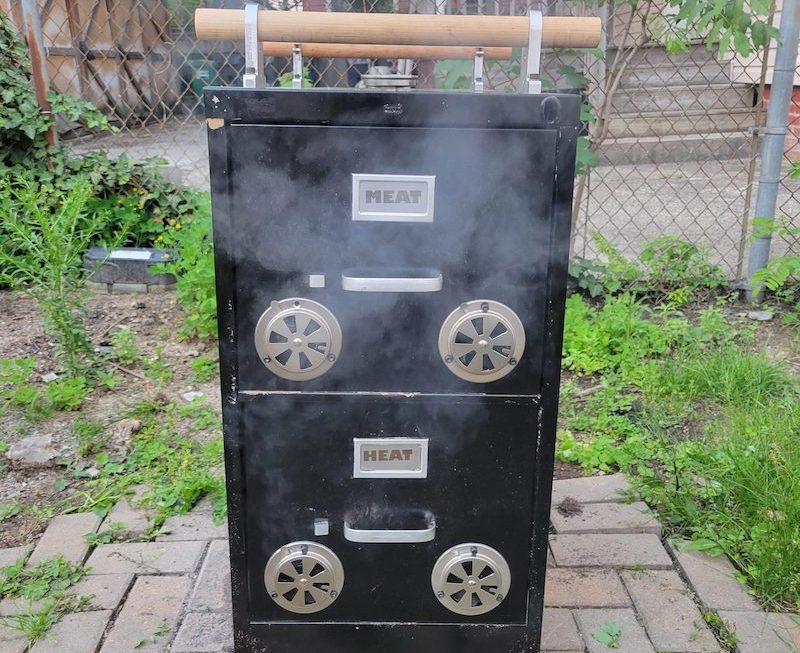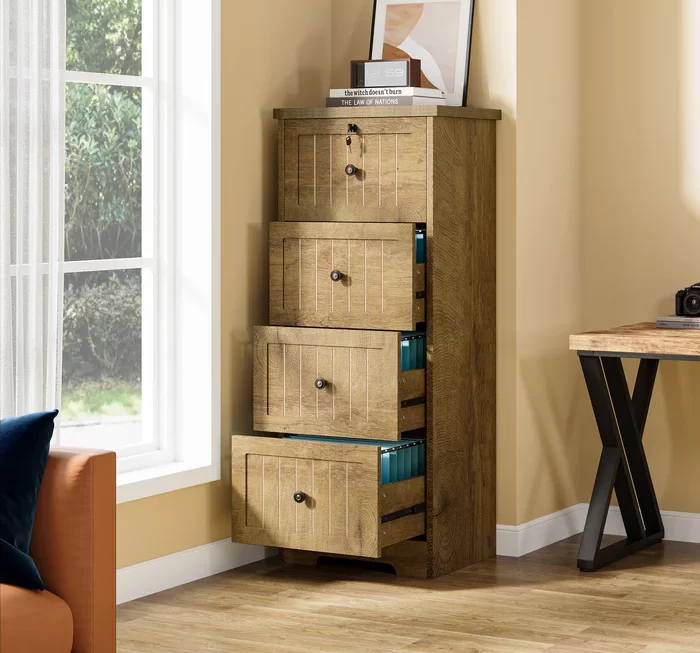Choosing the Right Filing Cabinet for Your Planter Project
When starting your filing cabinet planter project, selecting the appropriate filing cabinet is key. Look for a cabinet made of sturdy materials such as metal or wood. Ensure that it’s in a condition that can withstand outdoor weather, if you plan to place it outside. Size is also crucial. Consider the space you have and the types of plants you want to grow.
Look out for used filing cabinets which are often available at thrift stores or office liquidation sales. This is a cost-effective and eco-friendly option. Remember that the filing cabinet planter’s charm lies in its potential for transformation, so don’t worry about superficial scratches or dents; they can add character or be easily fixed. Ensure the cabinet drawers slide smoothly – this will be important when you fill them with soil and plants.
Lastly, think about the design. A cabinet with multiple drawers allows for more plant varieties or even creating themed layers. A single-drawer filing cabinet, on the other hand, can make a bold statement with one large display of flowers or greenery.
In your plan, keep the ‘filing cabinet planter’ as the main focus, ensuring it aligns with your outdoor decor and personal style preferences. Paying attention to these details will result in a chic and functional filing cabinet planter that enhances your outdoor space.
Preparing Your Filing Cabinet for Transformation
Before you can start planting, your filing cabinet planter requires some preparation. First, clean the cabinet thoroughly. Remove dirt, debris, and any loose paint. Use soap and water or a degreaser for a thorough clean. Allow it to dry fully before you proceed.
Next, remove any rust spots. This is especially important for metal cabinets. Use sandpaper or a wire brush to scrub off the rust. Then, apply a rust-inhibitor spray to prevent future rusting. For wooden cabinets, sand down any rough spots to prevent splinters.
To protect your planter from the elements, apply a coat of waterproof sealant. This will extend its life, especially if the filing cabinet planter will be kept outdoors. For metal cabinets, use a spray designed to prevent rust. For wooden cabinets, use a sealant appropriate for wood.
Lastly, drill holes in the bottom of each drawer. This step is critical for drainage to prevent water from pooling. Aim for several small holes rather than a few large ones to ensure an even drainage system for your plants.
Once these steps are complete, your filing cabinet planter is ready for the next stage of transformation. It will be durable and prepared for the outdoor conditions and the plants you will soon introduce.
Step-by-Step Guide to Converting a Filing Cabinet into a Planter
Turning a filing cabinet into a chic planter is straightforward. Follow these steps to create your own upcycled garden feature.
- Start with Safety: Wear gloves to prevent cuts. Move the cabinet to where you want it. It’s heavy and harder to move after filling.
- Prime the Surface: Apply a coat of primer to the entire exterior of the cabinet. Choose a primer suitable for metal or wood, based on cabinet material.
- Paint Your Cabinet: Use outdoor paint for durability. Select a color that complements your outdoor decor. Apply two or more coats as needed.
- Add Legs or Casters: For additional height and mobility, attach legs or casters to the bottom. Ensure they are sturdy and can handle the cabinet’s weight.
- Line the Drawers: Cover the bottom of each drawer with landscape fabric. This prevents soil from falling out while allowing water drainage.
- Fill with Soil: Use potting mix suitable for the plants you’ve chosen. Fill each drawer to about an inch from the top.
- Plant: Arrange your plants within the drawers. Consider height and sunlight needs. Ensure plants have room to grow.
- Accessorize: Add decorative stones or mulch on top of the soil. This aids moisture retention and adds a finishing touch.
Transforming a filing cabinet planter not only recycles old furniture but also adds unique charm to your outdoor space. Stick to these steps, and soon you’ll have a functional and stylish planter that’s sure to be a conversation starter.
Tips for Draining and Ventilation in Filing Cabinet Planters
Proper draining and ventilation are crucial for healthy plants in your filing cabinet planter. Without these, water can pool and roots may rot. Here are tips to ensure good drainage and airflow, promoting plant health.
Ensure Adequate Drainage Holes
When you drill holes in your filing cabinet planter, spread them evenly. This creates good water flow. Each drawer should have multiple small holes. If holes are too big, soil may leak out. After drilling, you can smooth rough edges with a file.
Raise the Cabinet for Airflow
Lift the cabinet off the ground using bricks or a stand. This step increases air circulation beneath the planter. It also helps to keep the cabinet dry, preventing rust and wood decay.
Use the Right Soil Mix
Choose a potting mix that drains well. Avoid garden soil which can be too dense for planters. Mix in perlite or vermiculite to improve aeration and drainage.
Monitor Watering
Avoid overwatering your plants. Check the soil before adding water. The top should be dry to the touch. If it’s wet, wait and check again later.
With these simple steps, your filing cabinet planter will have the drainage and ventilation it needs. Your plants will thrive, and you’ll enjoy a beautiful, upcycled garden piece.
Selecting Plants and Arrangement for Your Filing Cabinet Planter
When choosing plants for your filing cabinet planter, consider light, space, and design. Aim for a mix that fits your climate and the cabinet’s location. Here are simple steps to get it right.
First, decide on the type of plants. Low-maintenance succulents work well for busy gardeners, while vibrant annuals add color. Include perennials for long-lasting greenery. For shade, pick shade-loving ferns or hostas.
Next, arrange plants by height. Place tall plants at the back of drawers, medium ones in the middle, and short or trailing plants at the front. This creates depth and visual appeal.
Don’t forget to think about the plant’s spread. Ensure there’s room for growth. If plants get too crowded, they may not thrive.
Think about color combinations too. Mix different hues for a striking display or use similar shades for a more harmonious look. Play with textures too — combine leafy plants with those having rigid forms.
Lastly, envision how the plants will look together. Good arrangement is key to a chic filing cabinet planter. A well-planned layout makes your planter a standout piece in your garden.
By picking the right plants and arranging them smartly, your filing cabinet planer turns into a lush and stylish garden feature. Remember to keep balance, proportion, and your own style in mind as you select and place your plants.
Decorating and Personalizing Your Filing Cabinet Planter
After you’ve transformed your filing cabinet into a functional planter, it’s time to add some flair. Here are a few ideas to personalize your new garden piece:
- Choose a Theme: Pick a theme that reflects your personality or matches your outdoor space. Whether it be rustic, modern, or whimsical, your theme will guide your decoration choices.
- Add Colorful Accents: Brighten your filing cabinet planter with vibrant touches. Paint the drawer handles or add decorative patterns on the sides.
- Attach Decorative Elements: Fix interesting ornaments or garden art to the cabinet. Items like wind chimes, figurines, or signs can add character.
- Use Stencils: Create intricate designs with stencils and spray paint. This can give your planter an artistic look.
- Experiment with Textures: Play with different materials. Attach wood trim for a cottage feel or metal sheets for an industrial vibe.
- Incorporate Lighting: String lights or solar lamps can highlight your plants and make your planter stand out at night.
- Change Knobs and Handles: Replace the old cabinet handles with new ones that fit your style.
Personalizing your filing cabinet planter is the fun part. Let your creativity shine, and soon you’ll have a one-of-a-kind outdoor focal point.
Maintenance and Care for Your Upcycled Planter
Once your filing cabinet planter is set up, maintaining it ensures longevity and plant health. Here are straightforward tips to keep it in top shape. Regularly check plants for signs of stress or disease. Act quickly if you spot any issues. Water consistently, but don’t overdo it; this prevents root rot. Every couple of weeks, feed the plants with a balanced fertilizer. This promotes growth. Keep an eye on the drainage to avoid water logging the soil. Clean the planter outside to prevent rust and decay. Look for possible pests and deal with them promptly if found. Trim and prune your plants to maintain their shape and encourage new growth. Finally, refresh the soil and change plants as needed to keep your filing cabinet planter vibrant. With simple care, your chic planter will be a lasting part of your outdoor decor.
Advantages of Using a Filing Cabinet Planter in Your Outdoor Space
Using a filing cabinet planter in your outdoor space offers numerous advantages. Let’s explore some key benefits that make this DIY project worth considering:
Unique Style and Versatility
A filing cabinet planter adds unique style to your garden. With creative painting and decorating, it can match any decor. Its versatility allows it to fit into tight urban spaces or large backyards.
Eco-Friendly Upcycling
Transforming an old filing cabinet into a planter is eco-friendly. It reduces waste by repurposing something that may otherwise end up in a landfill. This upcycling project supports sustainable living practices.
Durable and Long-Lasting
Filing cabinets are designed to be durable. They withstand heavy files, making them perfect for holding soil and plants. Metal cabinets resist weathering and can last for years with proper care.
Easy Mobility
Adding casters to a filing cabinet planter makes it easy to move. You can change its location to catch the sun or protect plants from harsh weather.
Improved Drainage
Properly drilled drainage holes in a filing cabinet allow for excellent water flow. This prevents water logging and promotes healthy root growth for your plants.
Customizable Planting Space
With multiple drawers, you can create zones for different plants. You can plant herbs, flowers, or even vegetables in separate areas. This helps with crop rotation and varied visual interest.
Space-Saving Design
Filing cabinet planters are great space-savers. They offer vertical gardening options, perfect for balconies or small patios. You maximize your green area without expanding the footprint.
In conclusion, a filing cabinet planter is not just a chic addition to your outdoor area. It is also a practical, sustainable choice that offers durability and a novel approach to gardening. By choosing the right ‘filing cabinet planter’, you gain a long-lasting and stylish feature that benefits your garden and the environment.






